Weather patterns are changing again over the Northern Hemisphere. Some of the changes are still remnants of the Stratospheric Warming event. High-latitude blocking will modify the pressure anomalies over Europe and North America, with lower temperatures than normal over much of the central and eastern United States.
The Sudden Stratospheric Warming event (SSW) left a strong mark on the Polar weather circulation and atmosphere in early March. Some of that energy is still making its way down into the lower parts of the atmosphere, amplifying the already blocked patterns.
We now see high-pressure anomalies developing in and around the Polar Circle, impacting the entire North American region and Europe. We will look at the ongoing changes and the weather forecast trends for the coming weeks.

ATMOSPHERIC FLOW
The processes that have aided the current pattern changes have occurred in different parts of the atmosphere. This is because there are many layers to the atmosphere, and our weather unfolds in the lowest layer of the atmosphere, called the Troposphere.
But above that, we have the Stratosphere, also the home of the ozone layer. Both layers have their own circulation and are connected in many different ways. The main overall circulation is what we call the Polar Vortex.
That is why we separate the entire Polar Vortex into an upper (stratospheric) and a lower (tropospheric) part. They both play their role differently, so we monitor them separately. But how they are connected is also very important—image by NOAA-Climate.

The Polar Vortex behaves like a very large cyclone, covering the whole north pole and expanding to the south into the mid-latitudes. It is present through all atmospheric levels, from the ground up, but has different shapes at different altitudes.
We monitor any Polar Vortex activity because it can affect weather across the entire Northern Hemisphere. And it can impact the weather differently, depending if it is weak or strong.
A strong Polar Vortex usually means strong polar circulation. This locks the colder air into the Arctic Circle, creating milder conditions for most of the United States and Europe.
In contrast, a weak Polar Vortex creates a weak jet stream pattern. As a result, it has a harder time containing the cold air, which can now escape from the polar regions into the United States and Europe—Image by NOAA.
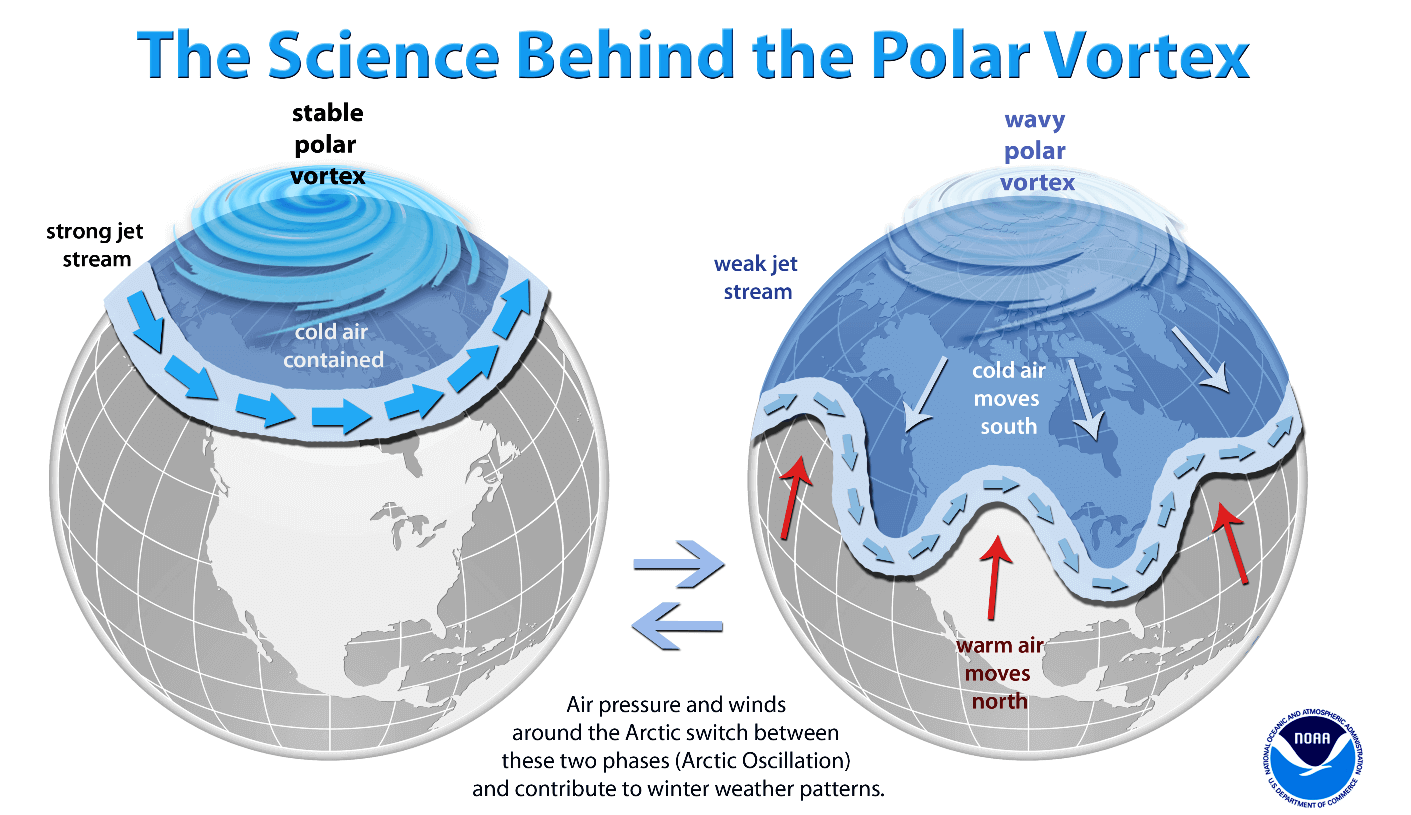
As we are in Spring already, a weak Polar Vortex does not typically produce strong cold air outbreaks and heavy snowfall. But, it can provide cooler conditions over the United States and central Europe, with frequent cold fronts and generally more unsettled weather.
SUDDEN STRATOSPHERIC WARMING 2023
A big part of this story is a Sudden Stratospheric Warming event (SSW) that occurred back in early March. These events usually mean a breakdown of the stratospheric circulation, with the resulting energy gradually moving downwards, impacting the weather in the lower levels.
Looking at the first day of the SSW event below, you can see a large warming wave in the top and mid-stratosphere. It spread over the polar regions. Combined with a strong emerging polar “anti-vortex” covering the North Pacific and western Arctic, it has pushed and displaced the Polar Vortex out of the North Pole.
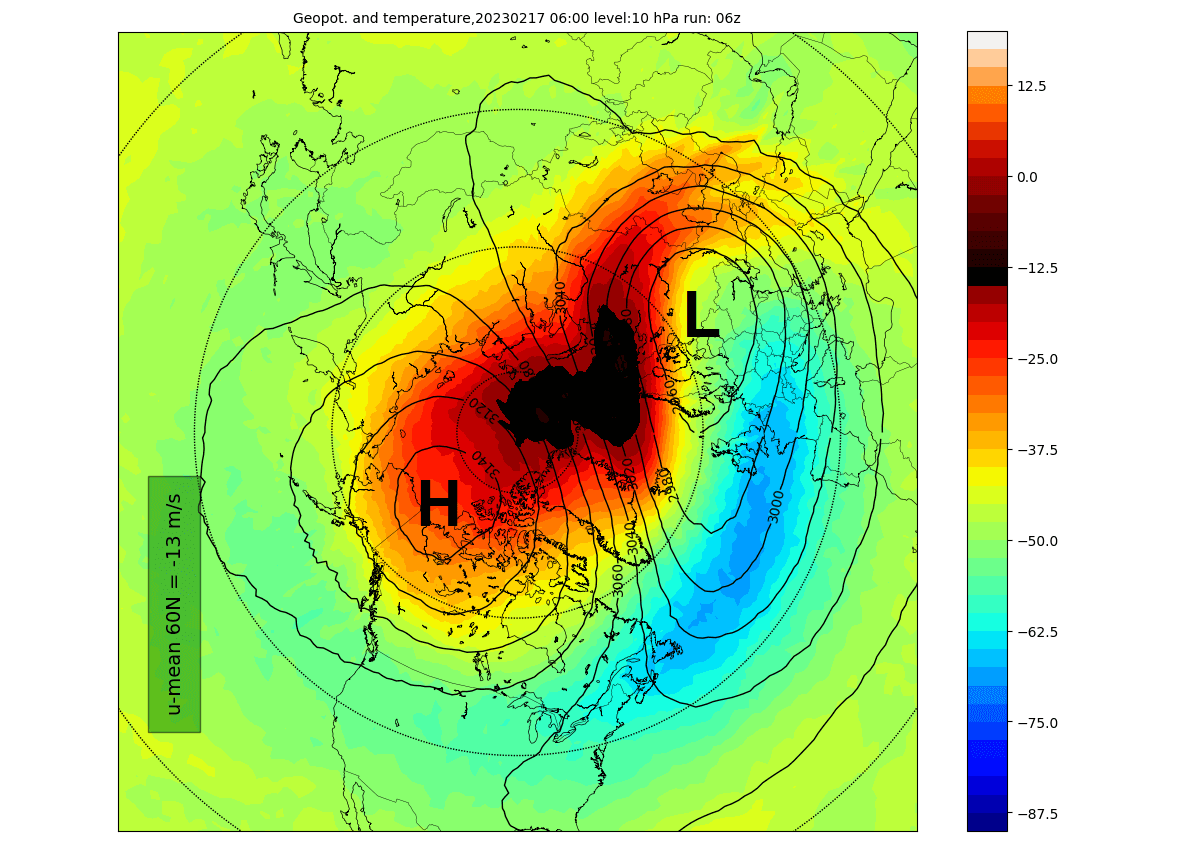
In the next image below, you can see the temperature anomaly for the same mid-stratospheric levels. It better highlights the actual sudden stratospheric warming event. Again, you can see that the temperatures were raised well above normal levels, as shown by the strong anomalies.

The whole process can be better seen in the video animation below, showing how the Polar Vortex started over the North Pole in the Stratosphere. But a strong high-pressure area and a warming wave have weakened the Polar Vortex and pushed it out.
A strong influx of energy from below into the Stratosphere created this major disruption and warming, completely collapsing the upper stratospheric Polar Vortex.
STRATOSPHERIC WARMING IMPACT
We now know that the effects from the Stratosphere have to progress downwards to have an impact. But how do these effects change the weather?
Below is a typical SSW process from a study by Dr. Amy Butler and co-authors. As an SSW occurs, it raises temperature and pressure in the Stratosphere. However, those effects progress downwards over time.

So keeping it simple, the main impact of an SSW event is a high-pressure system at the surface over the Polar regions. A manifestation of a high-pressure system in the lower levels can mean a disruption of weather patterns and strong changes in the jet stream.
The best way to follow SSW effects development is to look at atmospheric changes over time. Below is a graphic showing the pressure anomalies across the atmosphere over time.
Negative values indicate lower pressure (red anomalies), and positive values indicate higher pressure (blue colors). We have altitude from the ground up to the top of the Stratosphere (~46km/28mi).
In early March, high-pressure anomalies from the Stratosphere connected down to the lower levels. This was a direct impact. But a more gradual process continued in the lower Stratosphere.

You can see in the image above that the high-pressure anomalies persisted and are now helping to amplify the blocking pattern in late April. As always, there are also other background influences, but the SSW effects are playing their role as expected.
HIGH PRESSURE OVER THE NORTH
Looking at the average pressure anomalies for the next five days, you can see the strong high-pressure systems around the Polar Circle. As a response, we see a broad low-pressure area moving over the United States, while the European pattern is more dispersed.
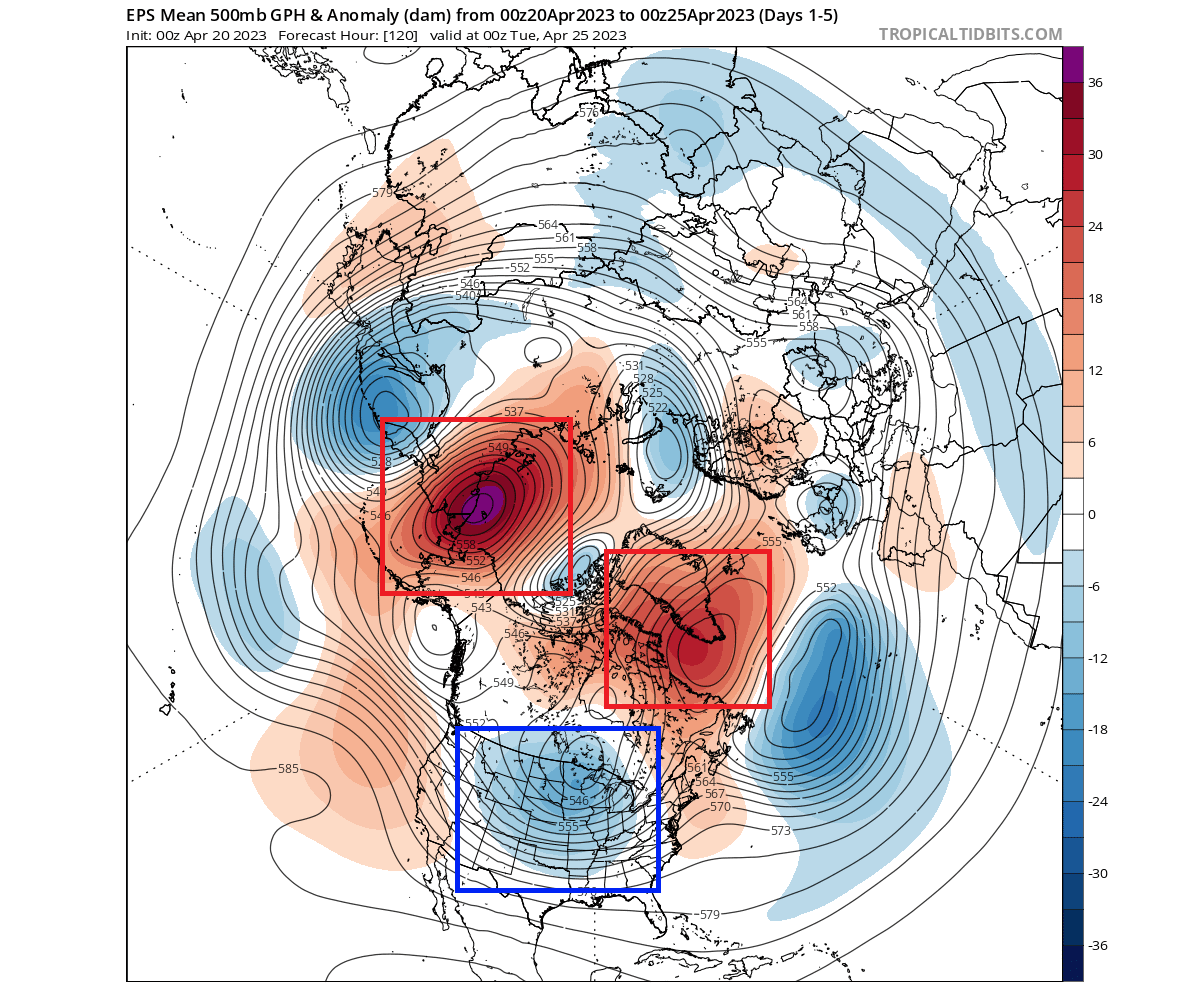
The resulting temperature pattern over North Hemisphere shows a strong cold anomaly over the United States and southern Canada. As a result, colder than normal air will spread across the country, from the Midwest down towards the south and east.
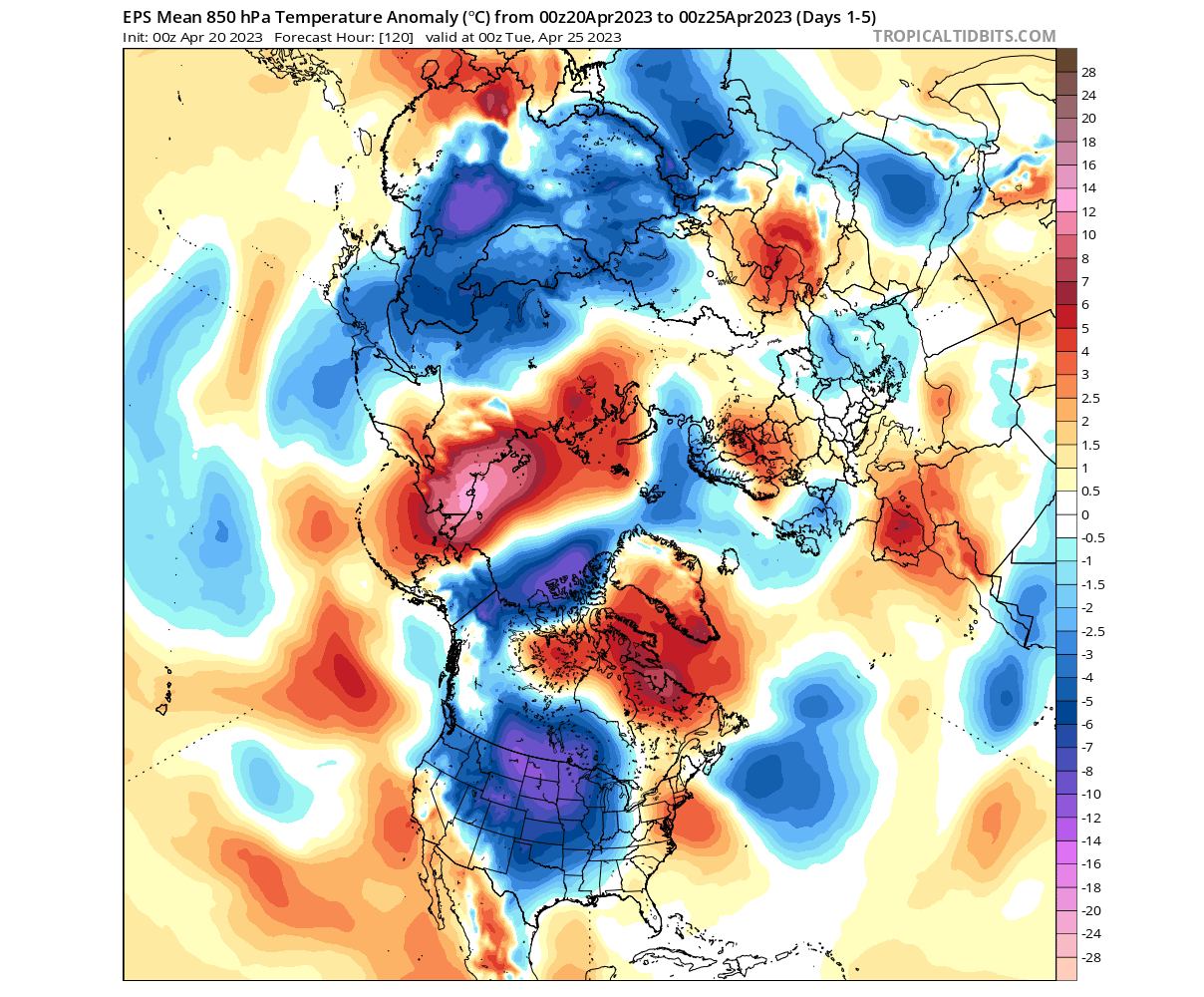
Focusing on Europe, you can see mostly normal to warmer weather over the continent. Cooler air with a more northerly flow is expected over the northwestern parts.
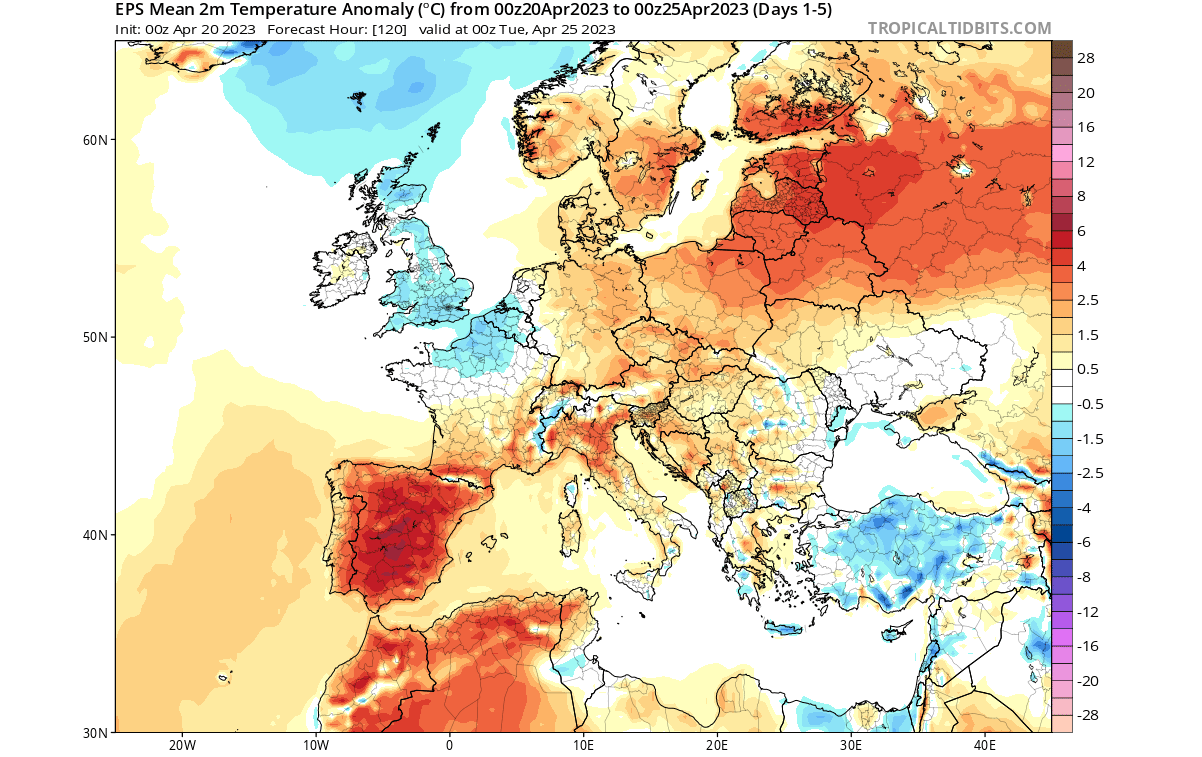
Looking at the United States and southern Canada, you can see a broad area of colder-than-normal temperatures. This results from a strong low-pressure system moving across the United States and a high-pressure zone to the north, amplifying a northerly flow.
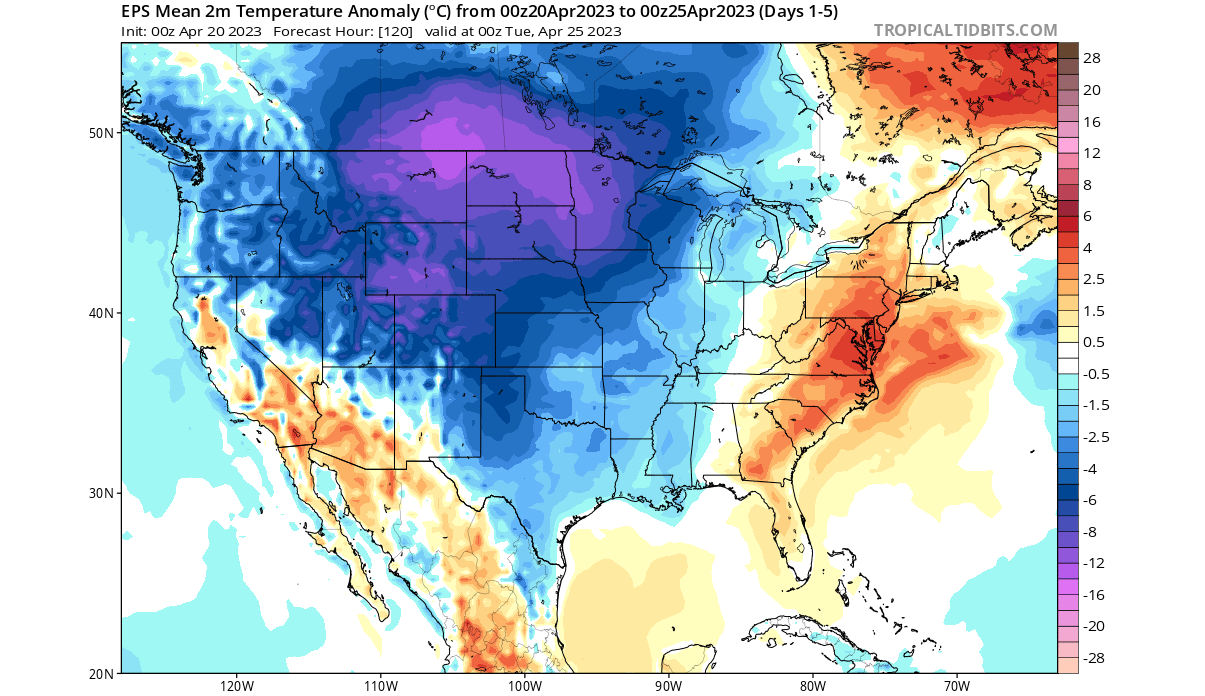
Focusing on the late weekend, the cold anomalies will spread far to the eastern United States and towards the southern parts of the country. As we are already in late April, this can mean an increased severe weather potential on the border between the colder and warmer air masses.
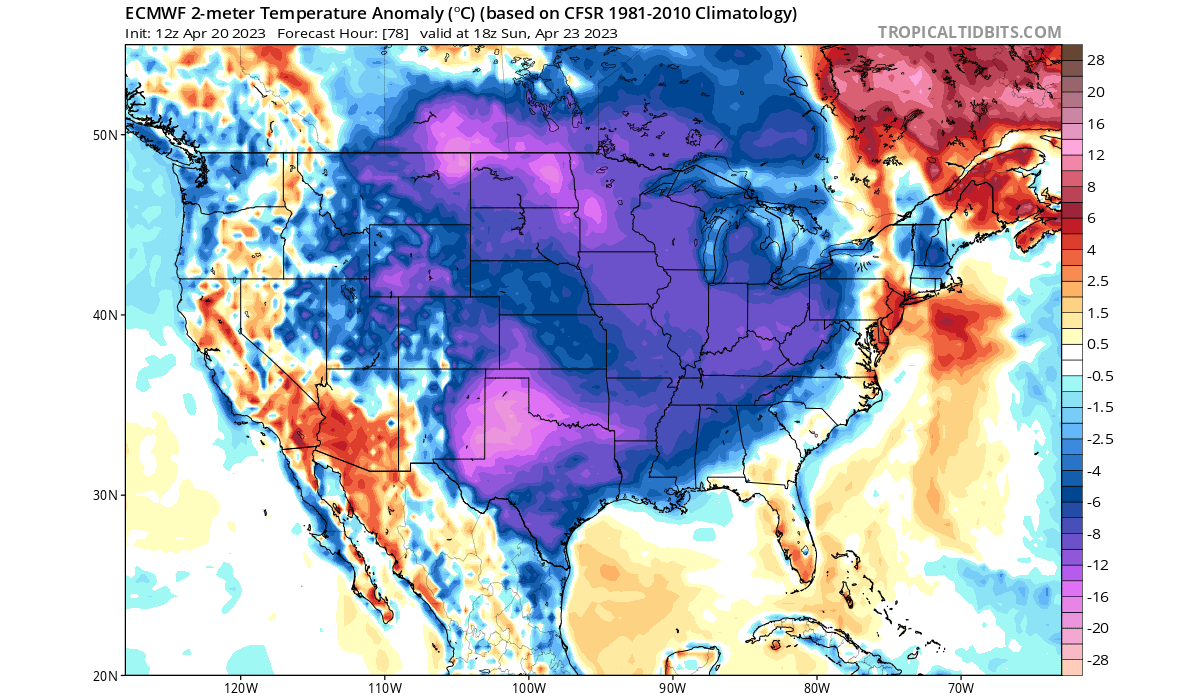
Looking at the SPC storm reports below for the past two days; you can already see widespread severe weather reports. The cold air is already starting to make its way down from the north, creating widespread severe weather conditions, with many hail, winds, and even tornado reports.
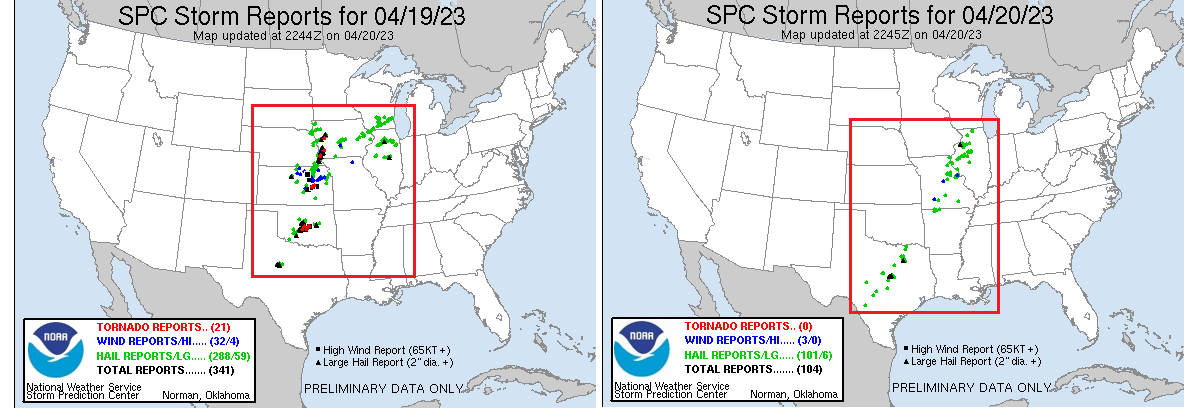
LOW PRESSURE TO THE SOUTH
The pattern will persist further into the last days of April. High-pressure blocking systems will remain in place, with broader low-pressure areas spanning from the United States into the North Atlantic.

Pressure anomalies over Europe look more consolidated now, with high-pressure (ridging) in the west and low-pressure (trough) in the east.
Looking at the temperature pattern, you can see strong warm anomalies over Western Europe, Siberia, and Northern Canada. This is the warmer-than-normal air being pushed into the regions by the blocking systems. But, as warm air moves in, the cold air has to move out, directly across the United States and Northern and Central Europe.

Over Europe, the main cold anomaly is forecast to over northern regions, reaching down towards the south and east. In contrast, unusually high temperatures for this time of year will spread across southwestern Europe.

Due to the ridging in the west, drier conditions are forecast over those regions. However, more precipitation is forecast over the central and northern parts due to more unstable air.

UNITED STATES WEATHER PATTERN
The last days of April will continue the widespread cooler pattern over the United States. The core of the colder air will be in the upper Midwest. The overall pressure pattern is stable, so this cooler pattern will likely continue into May.
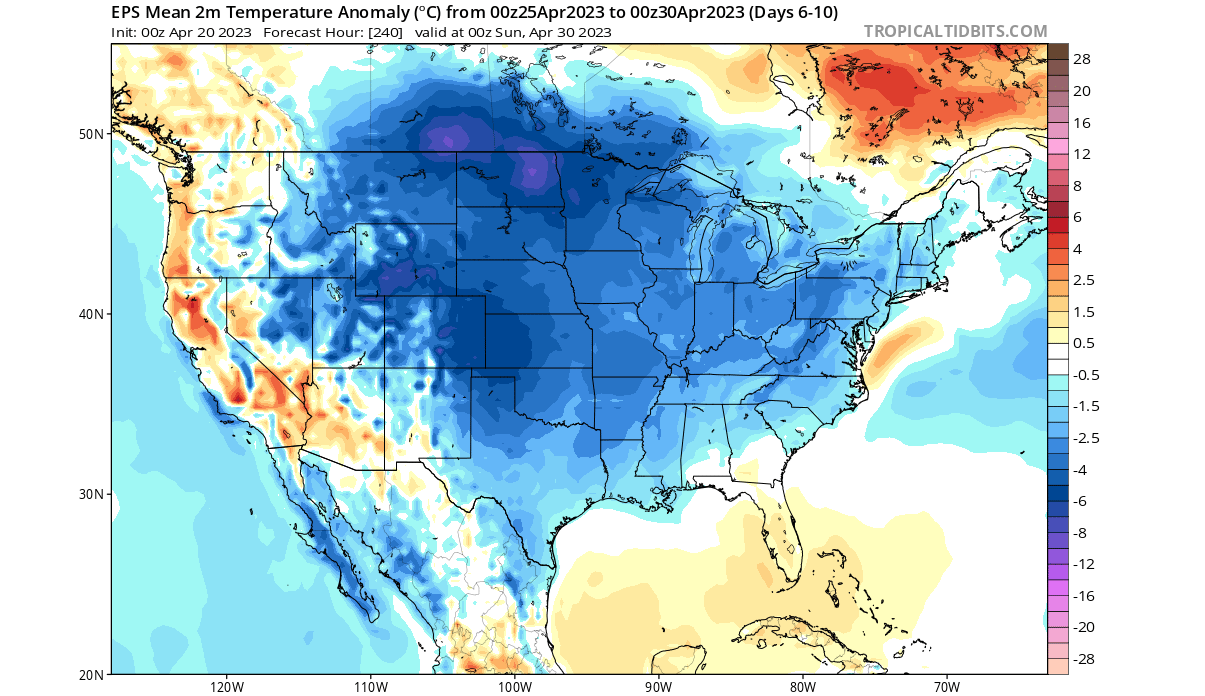
The image above shows the average 5-day surface temperature anomalies. Normal to warmer temperatures are forecast in the far western United States and over Florida for the final days of April.
Looking more specifically at Saturday next week below, you can see a strong cold anomaly extending across much of the central and eastern United States. The exception is the Pacific Northwest and northern California, with warmer temperatures.
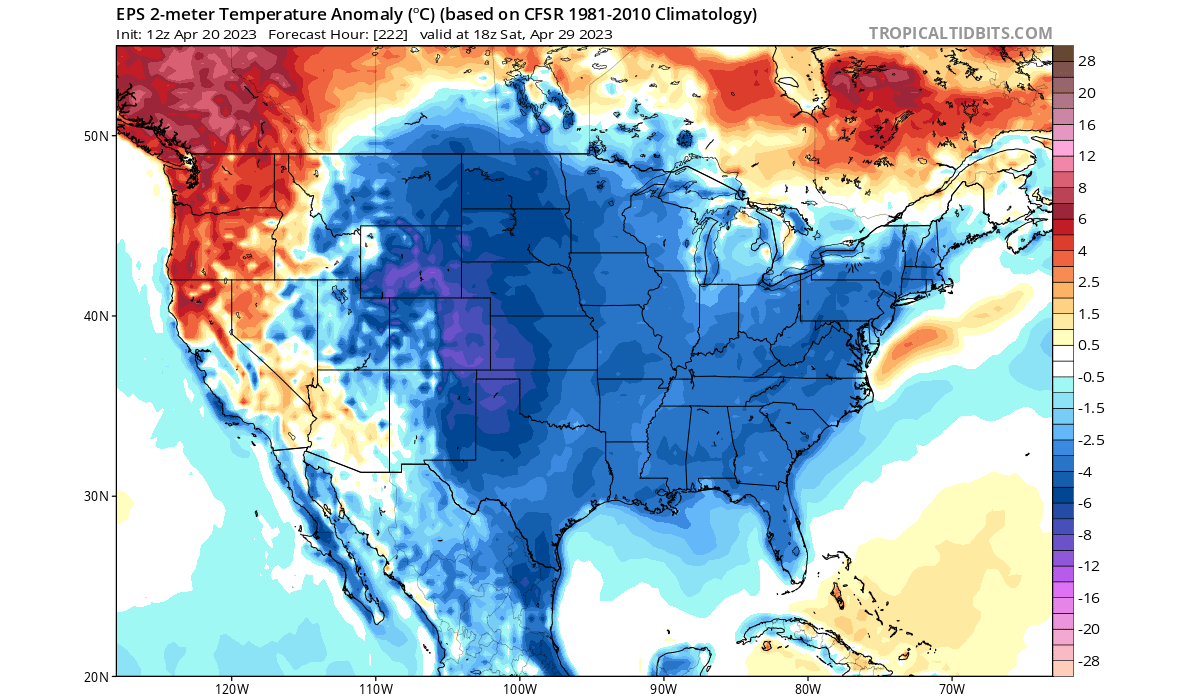
Precipitation-wise, you can see an area of more precipitation expanding from the central plains into the southeastern United States. This is the likely interaction of the new cold front and the warmer air towards the south. The precipitation anomalies can be an indication of where severe weather is likely.
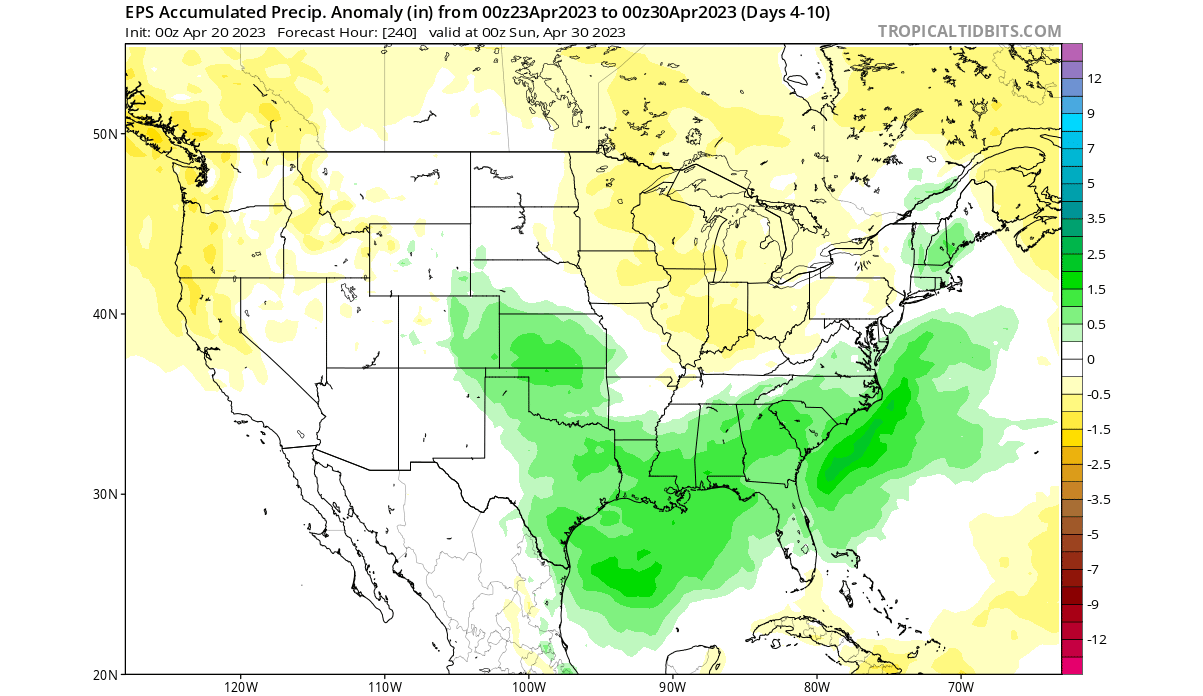
The official NOAA temperature outlook for this period shows the strong spread of colder anomalies across much of the central and eastern United States. This is in line with the ECMWF weekly forecast above.
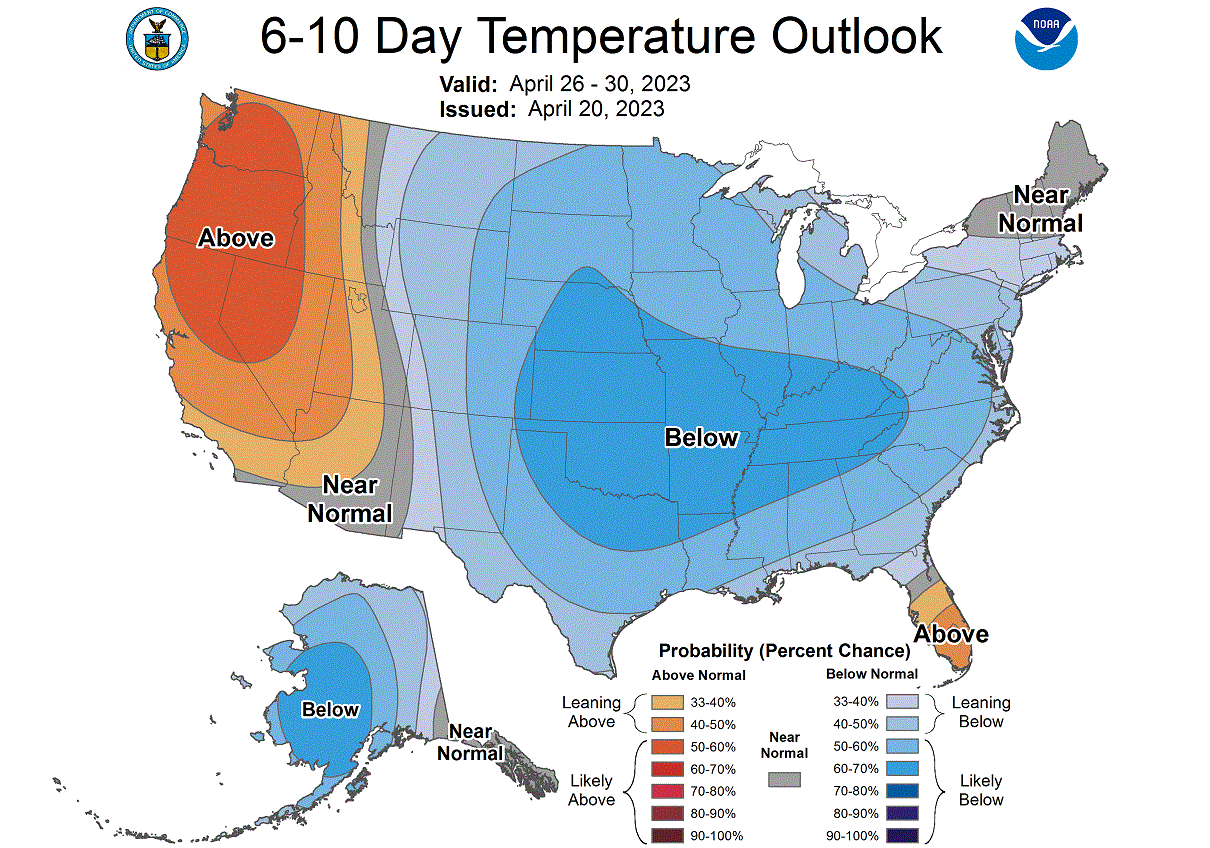
The precipitation forecast shows mostly above-normal precipitation across the central and eastern United States. This is expected as a new cold front moves from the upper Midwest to the south and east.
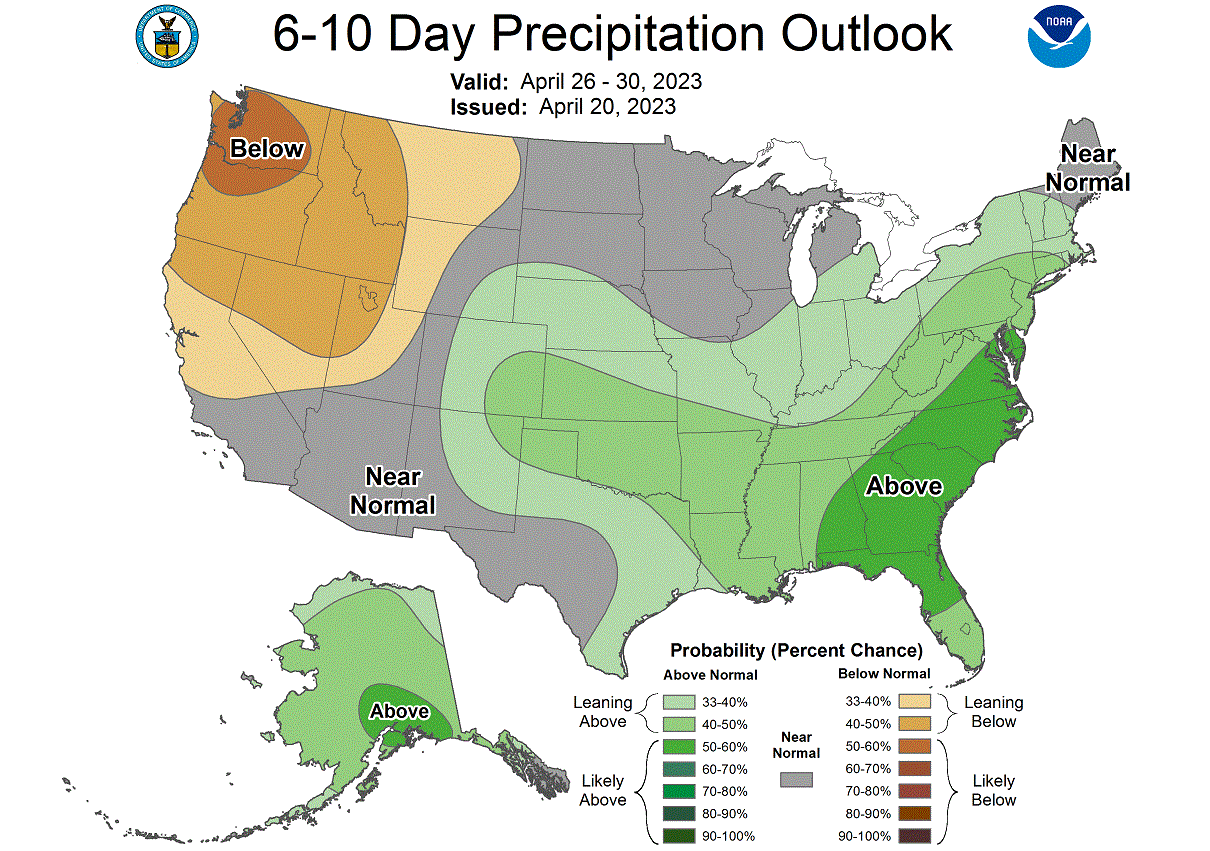
WEATHER PATTERN PERSISTENCE
Looking at the geopotential height trends for early May, you can see that this pattern is forecast to continue. Again, high-pressure anomalies across the Polar Circle can be seen, with low-pressure systems dancing around in the eastern United States, North Atlantic, and Europe.
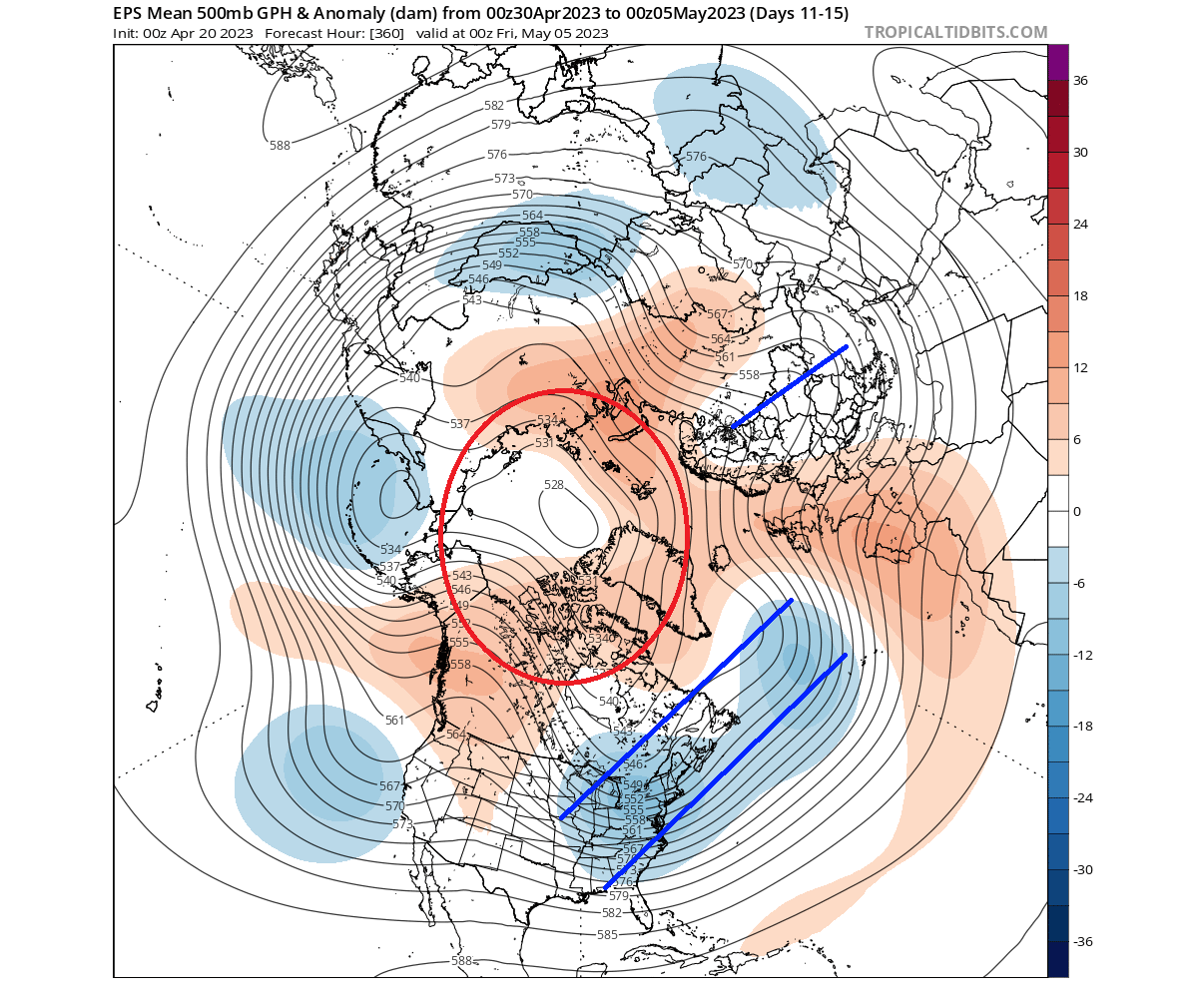
The temperature pattern is also forecast to remain stable and continue. Warm anomalies will persist around the polar regions, displacing the cold airmass into the eastern United States and Europe.
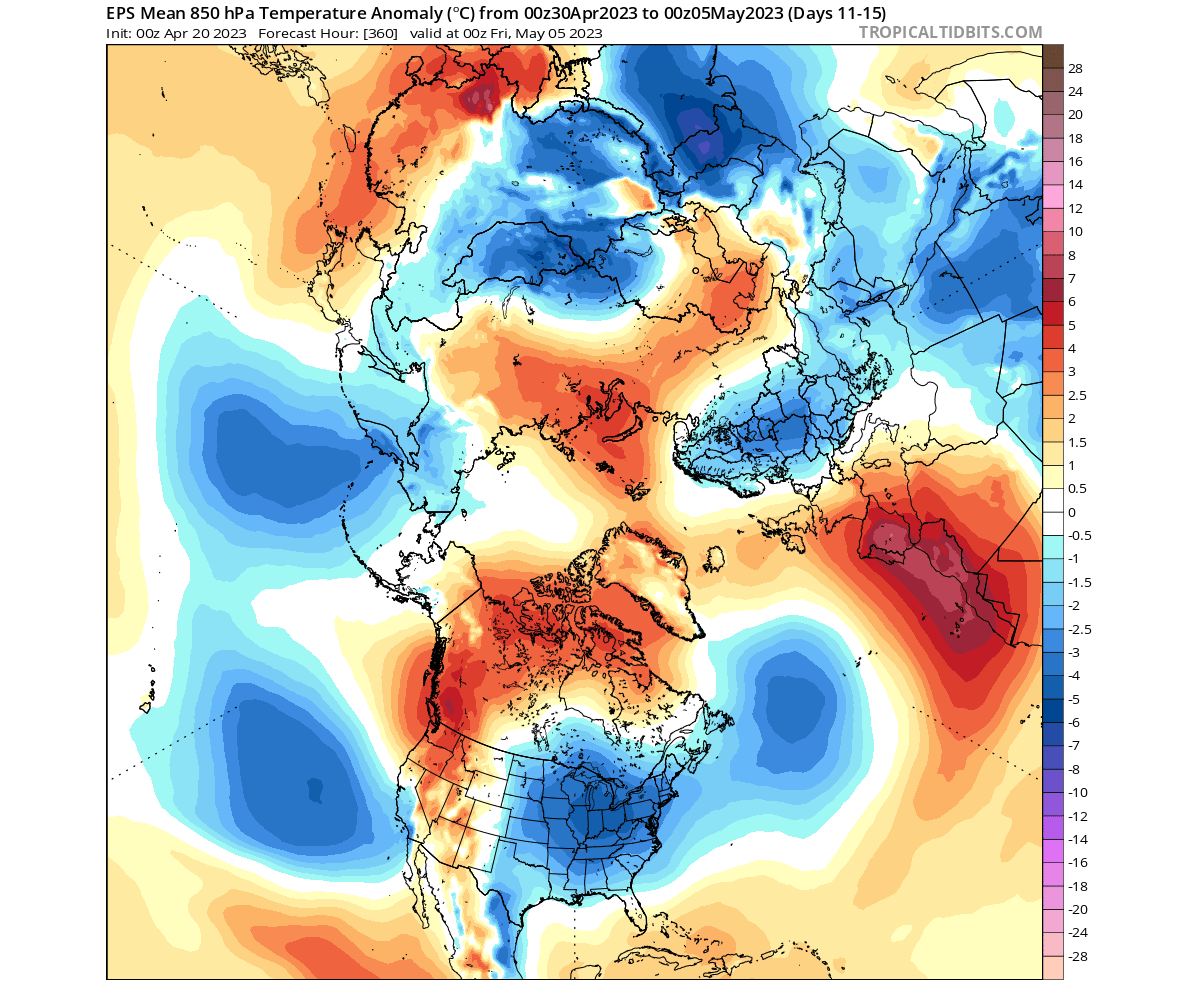
Over Europe, we see the continuation of the pattern from late April. Colder air anomalies are focused on the northern and eastern regions. The warmer air will remain in southwestern Europe, with unseasonably warm temperatures.
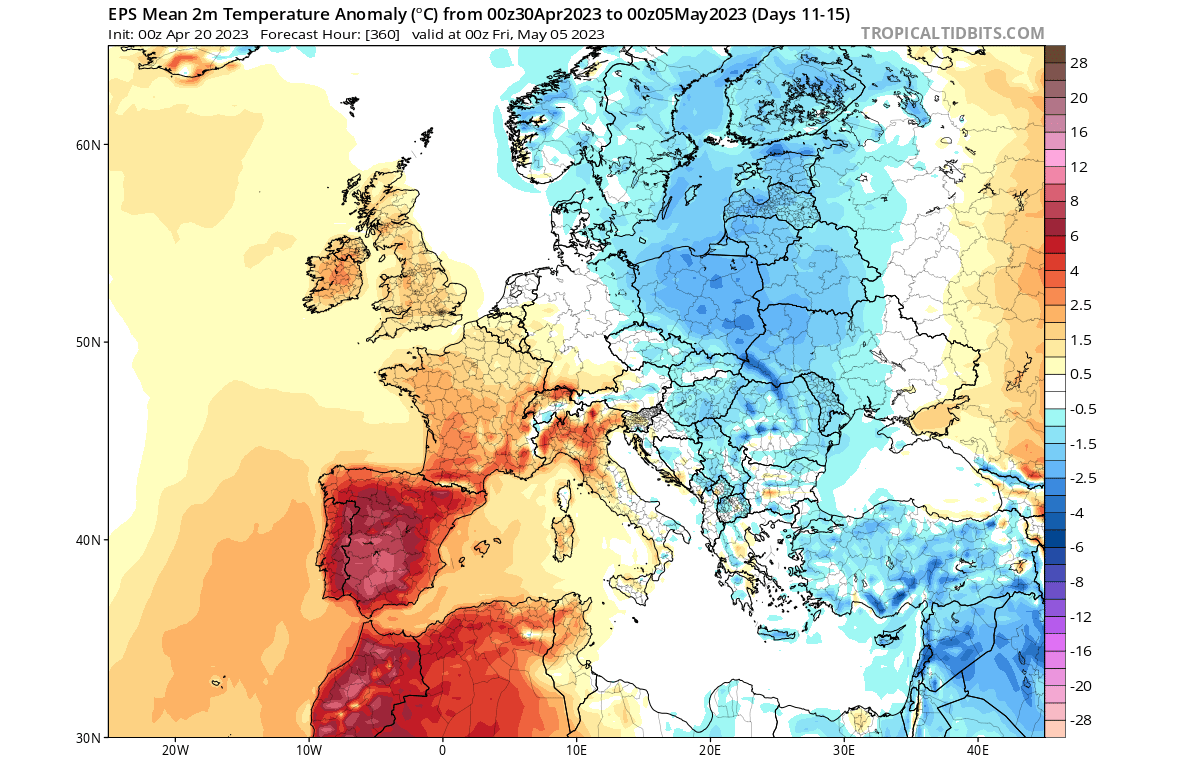
As the riding is expected to expand, less precipitation and drier conditions are forecast to expand further into central and northern Europe.
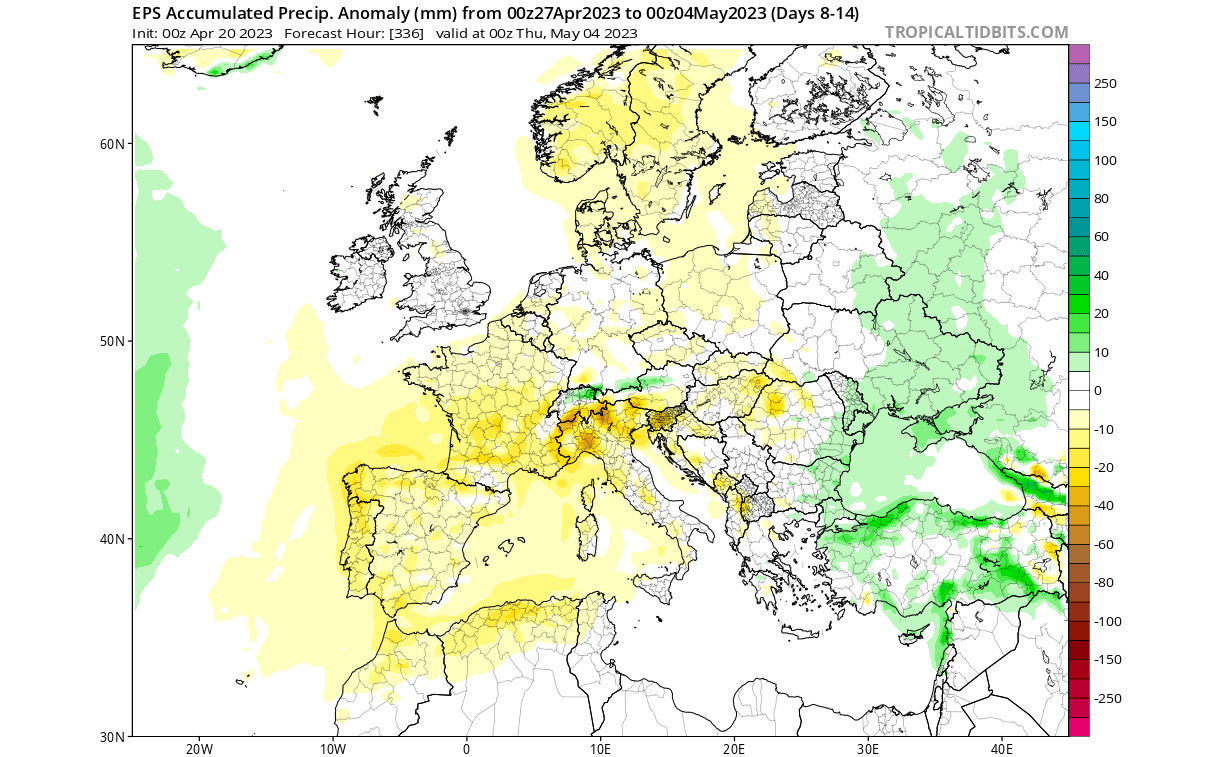
Looking at North America, we can see the cold air lingering around. The anomalies are not as strong at this forecast range as the ensemble mean spread increases. But the signal is clear, and the persistent weather pattern with the low-pressure system over the east will extend the northerly flow across the central and eastern United States.

The precipitation trend continues the drier conditions across the northern and central United States. More precipitation is expected in the far eastern and southeastern United States.
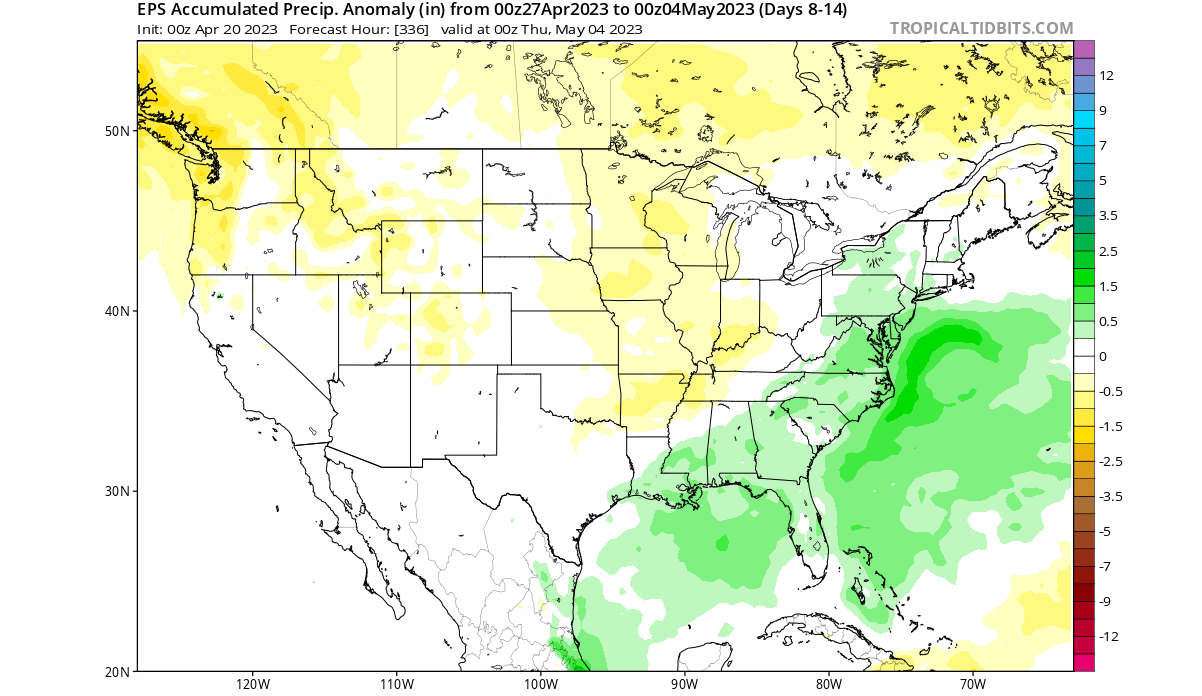
OFFICIAL NOAA OUTLOOK
The official NOAA outlook continues the colder-than-normal theme for the early May period. The core of the cold area is focused slightly more towards the eastern United States but still covers the central United States. Warmer weather is forecast across the western states.
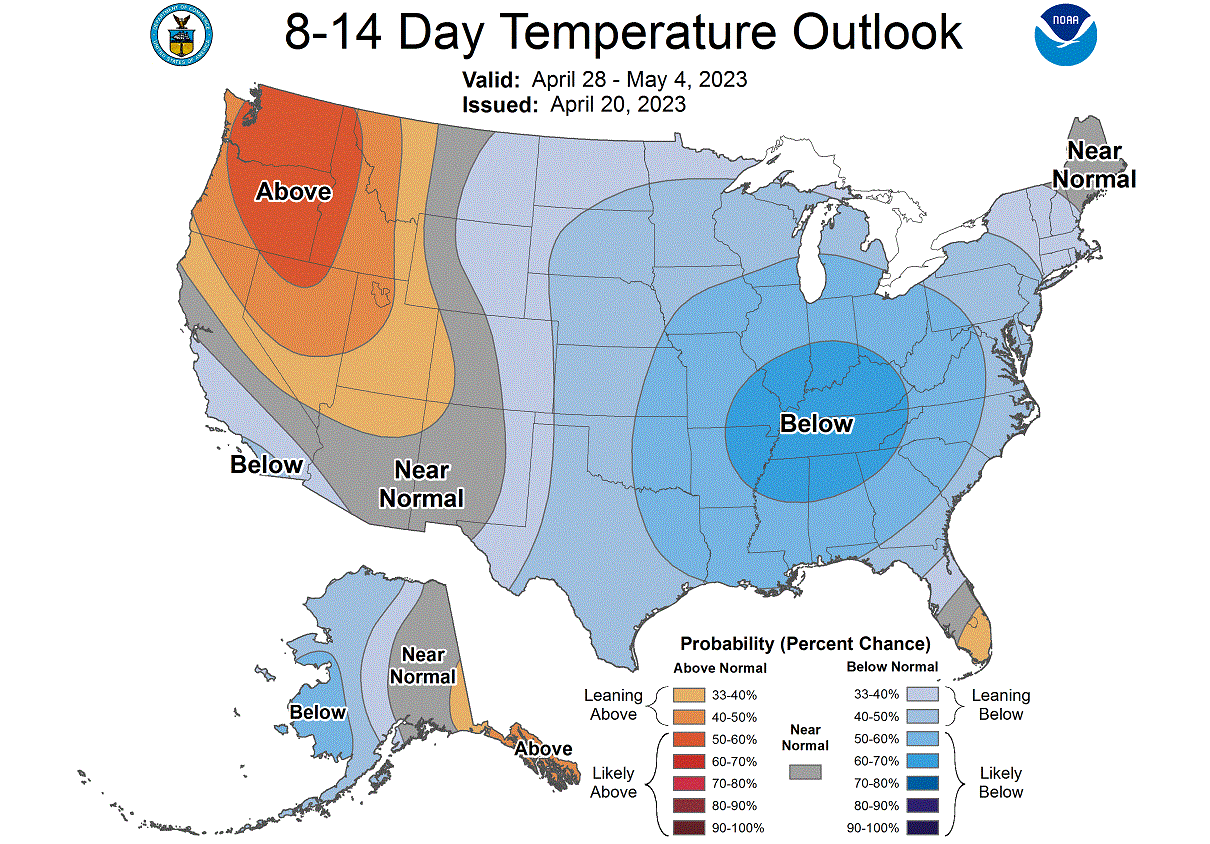
The precipitation outlook also shows the drier northern United States, like in the ECMWF forecast. And we can see more precipitation spanning from the southern United States in a coastal belt towards the northeastern parts. More rainfall is also expected across California.

EXTENDED RANGE WEATHER FORECAST
Looking at the GEFS extended range forecast, the same pressure pattern trend is hinted to continue into May. The high-pressure blocking remains over Greenland and northern Canada, with a low-pressure anomaly below it over the eastern United States and Europe across the Atlantic.
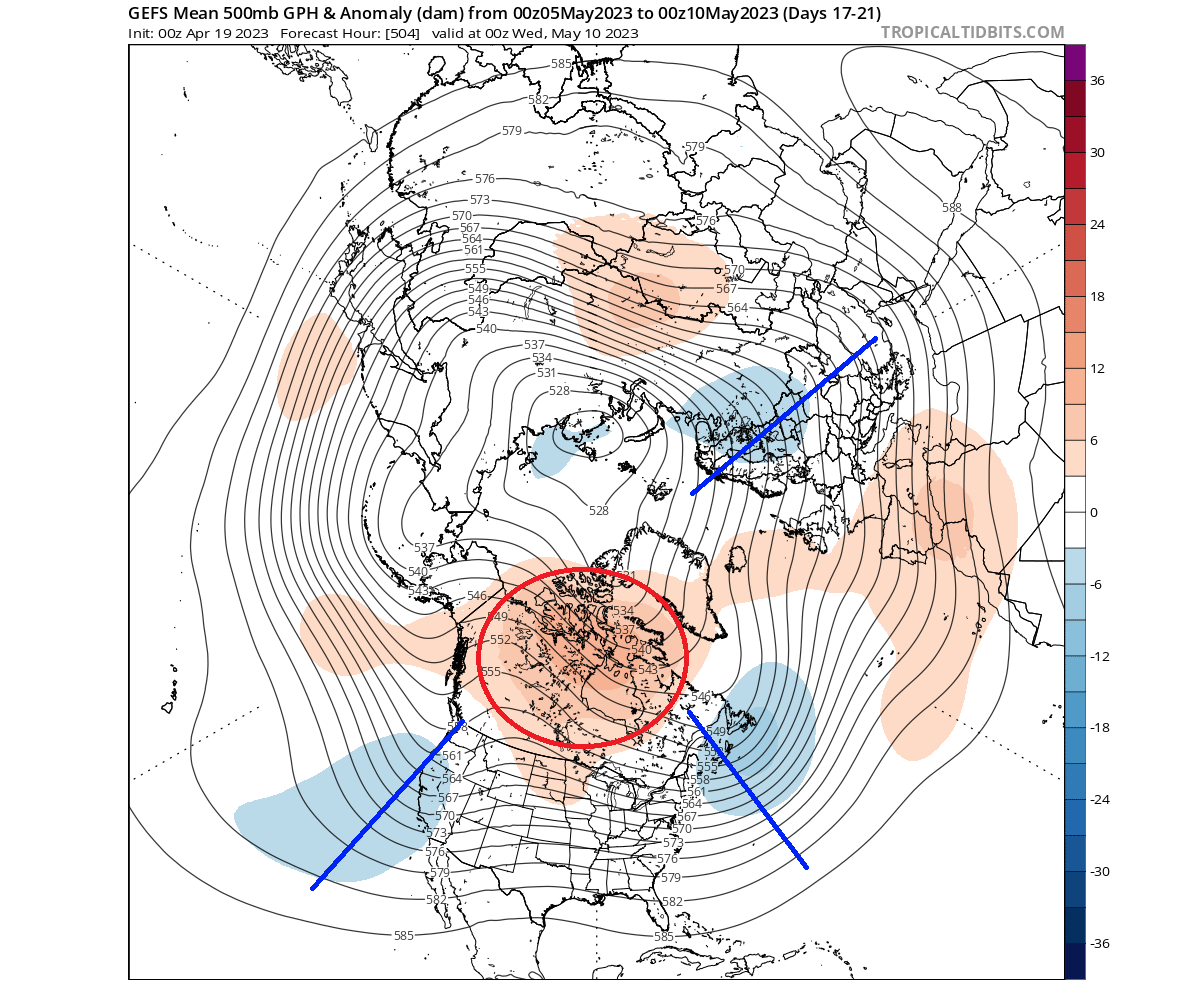
The temperature pattern for Europe does not change much, except for the warmer anomalies expanding from the southwest further up towards central Europe. However, the main cold area remains over northeastern Europe.
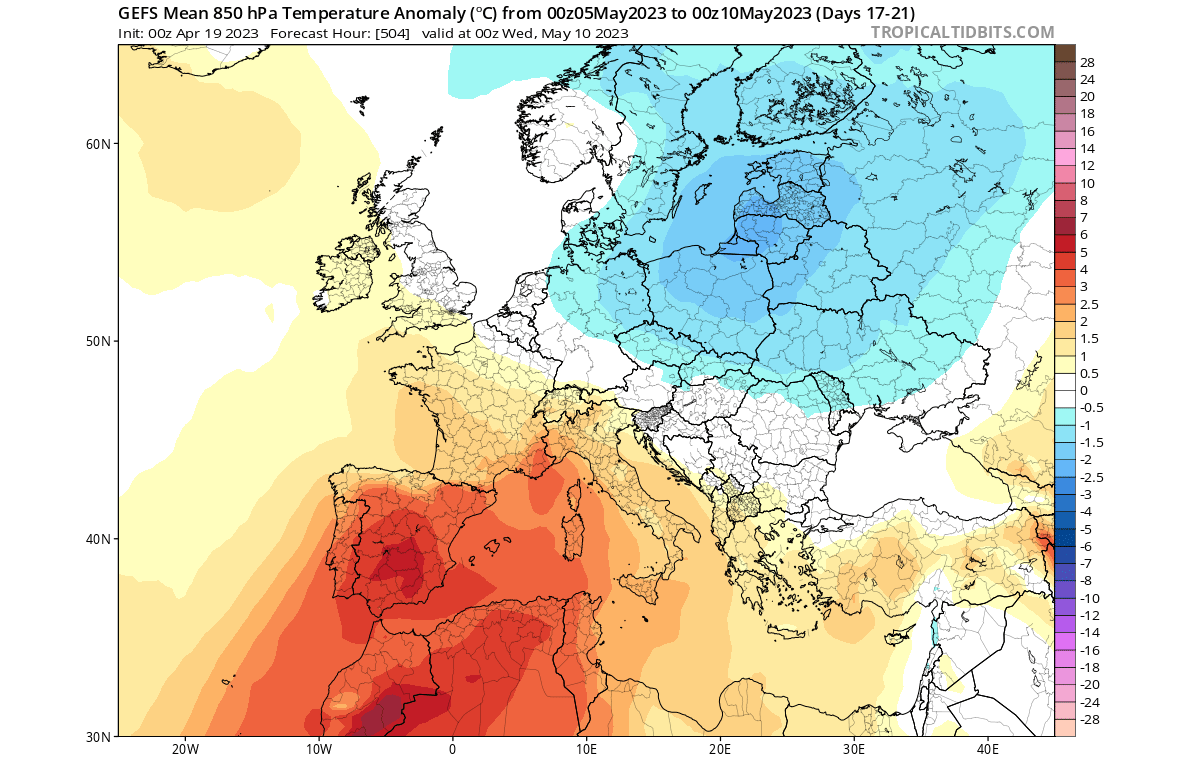
Over North America, the cold anomalies are slowly reducing over the central regions. Some cooler air remains over the upper Midwest and the northeastern United States. A large area of colder-than-normal temperatures remains in the Pacific, affecting California. At the same time, strong warm anomalies persist over northern Canada.
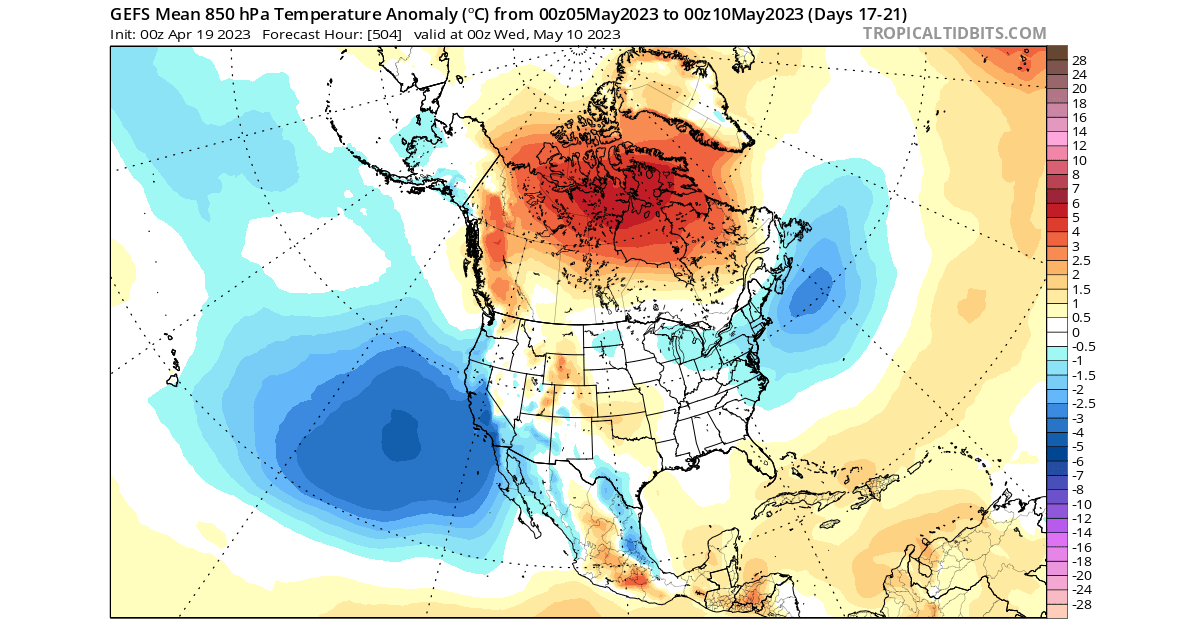
The official NOAA weather outlook for weeks 3 and 4 shows the colder trend continuing over the northern half of the United States. Although the accuracy is weaker at these ranges, the trend of continued colder temperatures is obvious towards mid-May.

Precipitation-wise, there is not much to talk about. However, more precipitation and cooler temperatures are forecast for the southwestern United States.

So as you can see, having a strong or weak Polar Vortex can significantly change the weather in the United States, Canada, and Europe in any season, not just in Winter. For this reason, we closely monitor the weather patterns and all activity surrounding the Polar Vortex.
We will keep you updated on the global weather pattern development, so bookmark our page. Also, if you have seen this article in the Google App (Discover) feed, click the like button (♥) there to see more of our forecasts and our latest articles on weather and nature in general.
Don’t miss: